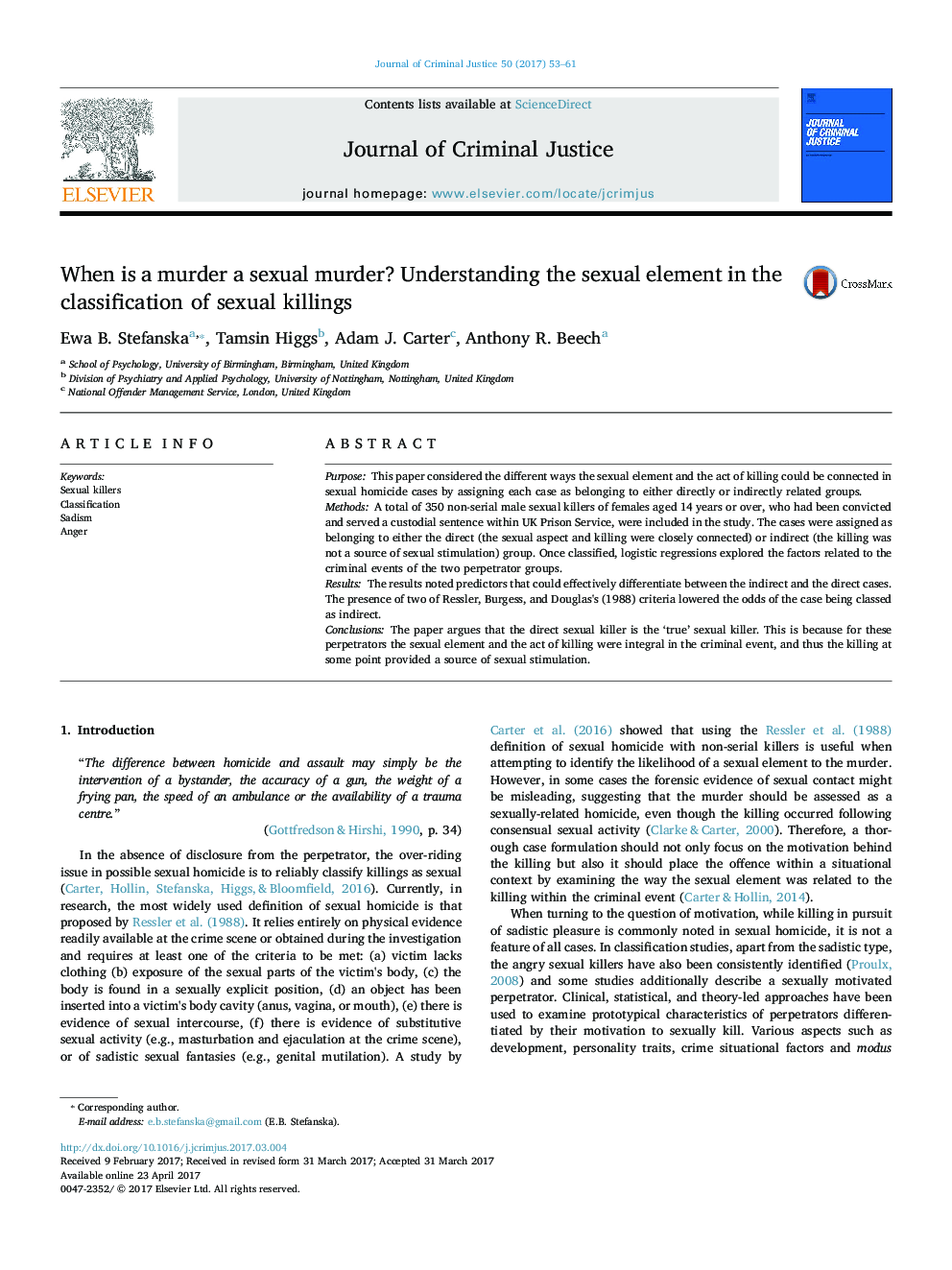| Article ID | Journal | Published Year | Pages | File Type |
|---|---|---|---|---|
| 5034323 | Journal of Criminal Justice | 2017 | 9 Pages |
â¢The study took into account the different ways the sexual element and the act of killing could be connectedâ¢Certain predictors could effectively differentiate between the indirect and the direct casesâ¢A possibility that Ressler et al.'s (1988) criteria for sexual homicide might be overly inclusive was raisedâ¢It is argued that the direct sexual killer is the 'true' sexual killer as the killing provided a source of sexual stimulation
PurposeThis paper considered the different ways the sexual element and the act of killing could be connected in sexual homicide cases by assigning each case as belonging to either directly or indirectly related groups.MethodsA total of 350 non-serial male sexual killers of females aged 14Â years or over, who had been convicted and served a custodial sentence within UK Prison Service, were included in the study. The cases were assigned as belonging to either the direct (the sexual aspect and killing were closely connected) or indirect (the killing was not a source of sexual stimulation) group. Once classified, logistic regressions explored the factors related to the criminal events of the two perpetrator groups.ResultsThe results noted predictors that could effectively differentiate between the indirect and the direct cases. The presence of two of Ressler, Burgess, and Douglas's (1988) criteria lowered the odds of the case being classed as indirect.ConclusionsThe paper argues that the direct sexual killer is the 'true' sexual killer. This is because for these perpetrators the sexual element and the act of killing were integral in the criminal event, and thus the killing at some point provided a source of sexual stimulation.
